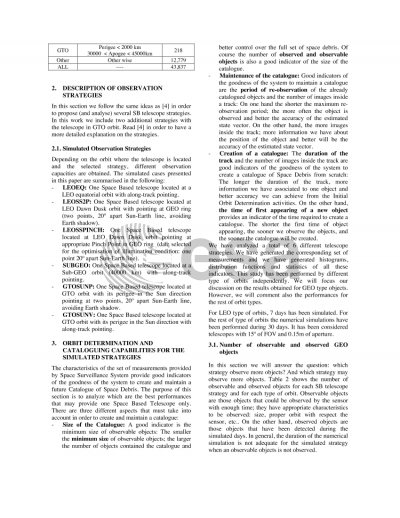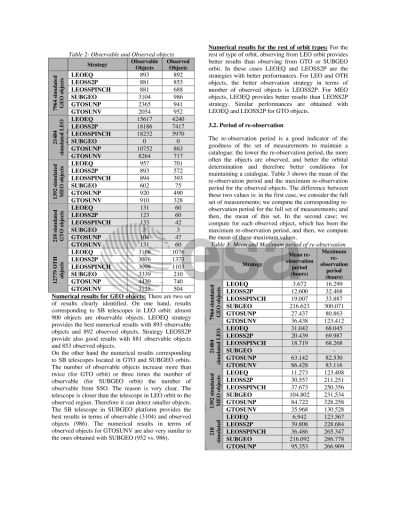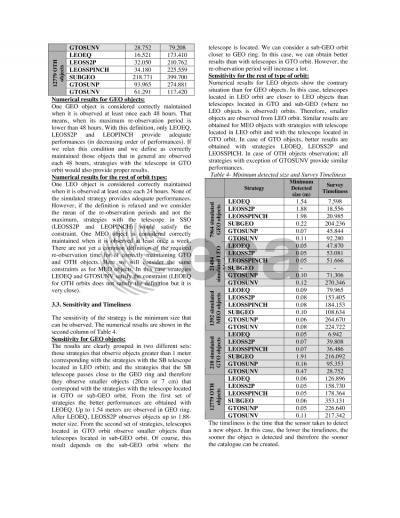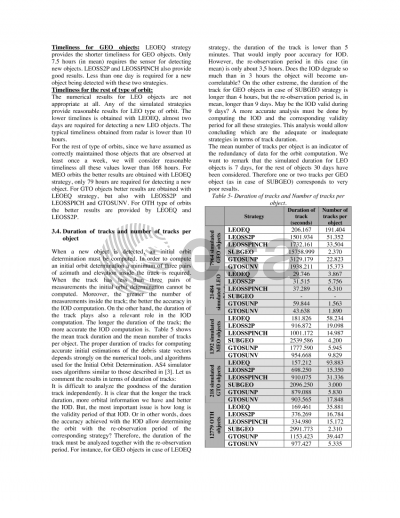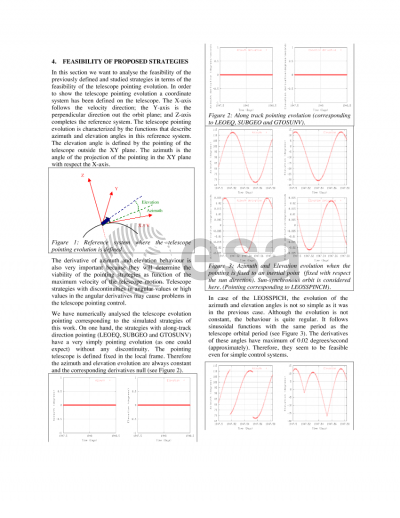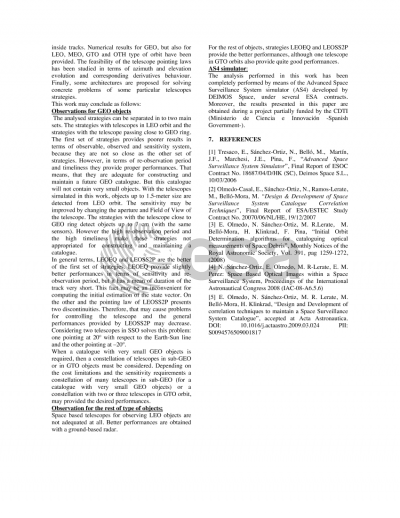Document details
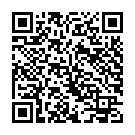
Abstract
This paper describes the inclusion of optical images acquired from orbiting telescopes into an autonomous European space surveillance system via the Advance Space Surveillance System Simulator (AS4). Special interest on space-based observation of GEO objects exists since it avoids the weather dependence and longitudinal restrictions of ground-based observations of those objects. Furthermore, space-based observations allow the detection of small objects that are not detected from ground-based sensors.In order to analyze the impact of space-based telescopes images, several aspects have to be studied. The first consideration is the selection of the appropriate orbits to locate the telescopes. A description of the most suitable orbits and strategies for the observation of space debris population will be provided.Once an appropriated orbit has been selected, the next important consideration is the analysis of an optimized pointing strategy and its associated requirements for feasibility. Several pointing strategies will be exposed by analyzing, among other factors, the impact of luminosity conditions in the most populated regions to be observed. Numerical results are presented in the form of statistics, which reflect the compromise between the density of detected objects, and other important parameters for orbit determination and cataloguing purposes as re-acquisition times or measurement track duration.Finally, overall analyses of possible space-based constellations are presented. Such constellations are aimed to solve the main drawbacks in considering only one satellite at the selected orbit. This is for example the case of revisit times when considering a sub GEO orbiting telescope which can be solve by re-distributing several sensors in the orbit. It will also allow carrying on more complex pointing strategies by the definition of several sensors located at same orbit pointed at two different regions.The AS4 was developed by DEIMOS Space ([1], [2] and also [5]). The results presented in this paper are obtained during a project partially funded by the CDTI (Ministerio de Ciencia e Innovación -Spanish Government-).
Preview

